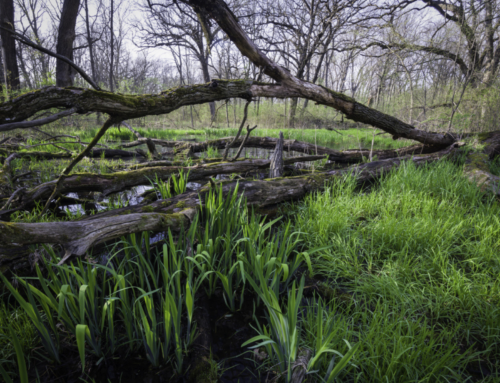Richard Chase
Massachusetts Department of Environmental Protection
Division of Watershed Management
8 New Bond St.
Worcester, MA 01606
Subject: Draft 2022 Integrated List of Waters
Dear Mr. Chase,
I am submitting comments on the draft 2022 Integrated List of Waters (IR) on behalf of the Connecticut River Conservancy (CRC). CRC is the principal nonprofit environmental advocate for protection, restoration, and sustainable use of the Connecticut River and its watershed. The Connecticut River and its tributaries (including the Deerfield, Millers, Chicopee, Farmington, and Westfield River basins) take up approximately one-third of the land area of Massachusetts.
Overall Comments
CRC appreciates the opportunity to review the watershed-based assessment and listing decision summaries, which provides stakeholders with the opportunity to review the decision-making process and appreciate the rationale behind these listings. Additionally, data provided by CRC and the Deerfield River Watershed Association (DRWA) were incorporated into listing decisions for the first time; we are grateful for the opportunity to provide information to DEP and look forward to continuing to contribute data for consideration in future integrated lists.
CRC is glad to note that bacteria TMDLs will be developed for the Chicopee, Connecticut, Deerfield and Westfield River watersheds. Given that the most recent TMDL for any watershed within the Connecticut River watershed was developed in 2006, we believe it is of critical importance to develop these TMDLs by 2024.
In 2020 CRC drew DEP’s attention to how the CALM methodology regarding fish passage barriers is skewed to coastal watersheds; we would again like to bring this to DEP’s attention. The Connecticut River watershed supports numerous migratory fish species including alewife and blueback herring, sea lamprey, striped bass, American eel and American shad as well as the federally endangered shortnose sturgeon. At the same time, the Connecticut River watershed is one of the most dammed watersheds in the country and the current CALM methodology precludes the listing of segments that would otherwise be considered impaired due to fish passage barriers.
For example, The Green River (MA33-30), with only one barrier between it and Long Island Sound (the Holyoke Dam) could be habitat to American eel and sea lamprey, at a minimum, if it were not for the existence of several dams with no fish passage that are owned by the City of Greenfield. CRC suggests the DEP consult with the MA Division of Marine Fisheries and the USFWS Connecticut River Coordinators office to address this issue. Page 6 of the report states that one of the major changes to the CALM for 2022 is “Diadromous Fish Habitat: any remaining rivers and lakes where diadromous fish runs exist but passage is restricted, severely restricted, or has no possible passage were added as AUs and assessed according to the decision flowchart.” We did not notice any changes to the CALM in this area and it might be more correct to specify that this happened only in eastern Massachusetts coastal watersheds.
The 2022 CALM lays out the time periods for which data were considered in attainment decisions and listing/delisting decisions ranging from 2011 – 2020 depending on the data source and ultimate use; specifically, only data less than 5 years in age would be used to evaluate use attainment including listing/delisting decisions. However, new listings for Deerfield use 2012 data as the only source of information, which seems contrary to the 2022 CALM.
Deerfield Basin
Both Ashfield Pond (MA33001) was not assessed for primary contact recreation and because no bacteria data were available. Page 9 of the draft IR states that DEP used Massachusetts DPH harmful algae bloom reports, fish consumption advisories, and public beach (bacteria) postings for its assessments. E. coli data for Ashfield Pond, (Ashfield Park) are available in the annual Massachusetts Freshwater Beaches: Water quality data for public and semi-public beaches.3 Additionally, Ashfield Pond was closed due to an algal bloom in 2020.4 These data sources should be consulted for listing/delisting decisions.
Similarly, Pelham Lake (MA33016) and Green River MA33-2 were not assessed due to lack of data, which are likewise available in the Massachusetts Freshwater Beaches: Water quality data for public and semi-public beaches. As noted in the description of the river segment, the Green River is dammed to create a public swimming area in the summer and is listed as “Greenfield Municipal Bathing Beach”. These data sources should be consulted for attainment decisions.
The draft IR includes a new temperature impairment for East Branch North River (MA33-19). We support the recommendation of additional long-term temperature data collection and would like to make DEP aware that CRC completed restoration projects upstream of this segment and downstream of Jesse Wood Lane in 2020 that may help address this impairment.
The draft IR includes a new E. coli impairment for Unnamed Tributary (MA33-137) based on 6 samples from 2012 with a geometric mean was 153 cfu/100 mL. While this does surpass the threshold of 126 cfu/100mL, CRC questions whether this presents a significant enough exceedance to justify the attainment decision, especially considering the age of these data.
The East Branch North River (MA33-19), Green River (MA33-30), Hinsdale Brook (MA33-21), South River (MA33-102), and an unnamed tributary to Creamery Brook in the South River watershed in Ashfield (MA33-137) have temperature impairments added based on 2012 assessments. Given that 2012 was only one year after Hurricane Irene, which did extensive damage in the Deerfield basin, it seems that using an assessment from this year is potentially not representative of current conditions. Impairments may be present, but we hope DEP can reassess these impairments when it returns to the Deerfield basin in the near future.
Millers River Basin
Lake Mattawa (MA35112) in Orange is listed as impaired for non-native aquatic plants and the use attainment summary specifically lists variable milfoil (Myriophyllum heterophyllum) as the non-native plant contributing to the listing decision. Other segments in the draft IR list impaired waters naming specific non-native aquatic plants. Why is Lake Mattawa listed as impaired for “nonnative aquatic plants” instead of “variable milfoil’?
The draft IR also explains for primary and secondary contact recreation “No bacteria data are available to assess the status of the Primary Contact Recreational Use for Lake Mattawa, so it is Not Assessed.” However, the report Massachusetts Freshwater Beaches: Water quality data for public and semi-public beaches5 includes bacteria data from 2021 and previous years for Orange Town Beach, which is another name for Lake Mattawa. In 2021 there were 16 samples taken with a a single maximum exceedance. CRC suggests that these data, which DEP consults for listing, are used to inform use attainment for recreation.
Westfield River Basin
Ashley Pond (MA32002) and Pequot Pond MA32055 have both been listed due to the presence of invasive water chestnut (Trapa natans). CRC hosts a robust water chestnut monitoring and removal program throughout the Connecticut River and its tributary watersheds. CRC staff and volunteers have identified additional infestations of water chestnut in Pond Brook (MA32-24) and Powdermill Brook (MA32-09).
The temperature impairment for Westfield River (MA32-04) was continued, though, as DEP notes, many of the exceedances are naturally occurring. We appreciate the need to collect more data to make an appropriate delisting decision and we’re supportive of DEP’s suggestion, “to split this AU into two new AUs one upstream from any influence of the flood control project and one downstream)” if there are not sufficient data to inform a listing/delisting decision in the next IR cycle.
We appreciate the work of DEP staff to draft the 2022 Integrated List of Waters and the opportunity to submit these comments. For further questions, I can be reached at kwentling@ctriver.org.
Sincerely,
Kelsey Wentling (she/her)
River Steward in MA
Connecticut River Conservancy







